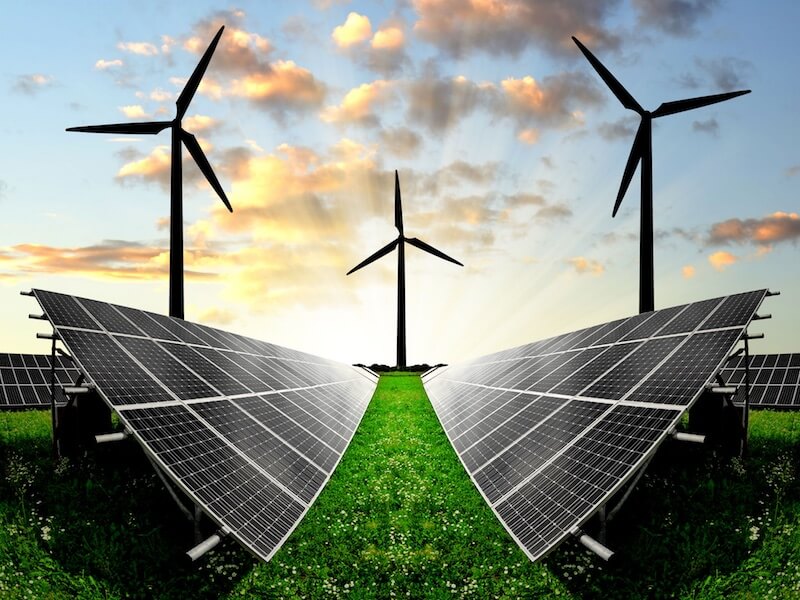Alternative Energy Sources: A Sustainable Solution for Rural Living and Homesteading
In recent years, there has been a growing interest in finding alternative energy sources that are both sustainable and environmentally friendly. This shift towards renewable energy is especially relevant for those living in rural areas and homesteads, where the reliance on traditional power grids may be limited or impractical. In this article, we will explore some of the most viable alternative energy options available today, offering a comprehensive analysis of their benefits and feasibility in rural living.
Solar Power:
One of the most popular forms of alternative energy is solar power. Harnessing the sun’s rays through photovoltaic (PV) panels allows homeowners to generate electricity without producing harmful emissions or relying on finite resources such as fossil fuels. The availability of sunlight in rural areas makes solar power an attractive option for off-grid living.
Installing solar panels requires an upfront investment, but it offers long-term financial benefits by significantly reducing or eliminating utility bills. Moreover, many governments provide incentives like tax credits or grants to encourage the adoption of solar power systems. With advancements in technology, PV panels have become more efficient and affordable over time.
Wind Power:
For homesteaders with ample open space and consistent wind patterns, wind power can be a viable alternative energy source. Wind turbines convert kinetic energy from the wind into electrical energy using rotors connected to generators. Unlike solar panels that require direct sunlight, wind turbines can generate electricity day and night as long as there is sufficient wind speed.
While initial costs may be high due to turbine installation expenses, ongoing maintenance needs are relatively low compared to other renewable sources. However, one crucial consideration is ensuring proper zoning regulations are followed when planning to install wind turbines on your property since they often need large clearances away from neighboring buildings and structures.
Hydropower:
If you have access to running water such as rivers or streams on your property, hydropower can be an excellent choice for generating electricity. By channeling the flow of water through turbines, mechanical energy is converted into electrical energy. This reliable and consistent source of power has been used for centuries, especially in rural areas where rivers were historically harnessed to power mills.
While installing a hydropower system can be more complicated than other alternatives due to infrastructure requirements, it offers long-term benefits with minimal operational costs once established. However, care must be taken to ensure that any alterations made to natural water sources comply with environmental regulations and do not disrupt local ecosystems.
Biomass Energy:
Biomass energy utilizes organic materials like wood chips, agricultural residues, or even dedicated crops such as switchgrass or corn stalks to produce heat or electricity. This renewable resource can be particularly advantageous for homesteaders who have access to ample biomass waste from their agriculture or forestry activities.
By burning biomass directly or converting it into biogas through anaerobic digestion processes, this form of alternative energy reduces reliance on fossil fuels while minimizing waste disposal issues. However, it is important to consider the availability and sustainability of biomass resources in your area before investing in a biomass energy system.
Geothermal Energy:
For those living in regions abundant with geothermal activity, harnessing geothermal energy can provide a constant and sustainable source of power. Geothermal systems utilize the Earth’s natural heat by tapping into underground reservoirs of hot water or steam. The captured thermal energy is then used for heating purposes or converted into electricity using geothermal power plants.
While initial installation costs may be high due to drilling and equipment expenses, geothermal systems offer significant long-term savings on heating and cooling bills. Moreover, they have a small physical footprint compared to other renewable sources since most components are located underground.
Conclusion:
As we strive towards a greener future, exploring alternative energy sources becomes vital for rural living and homesteading enthusiasts seeking self-sufficiency while minimizing their environmental impact. Solar power, wind power, hydropower, biomass energy, and geothermal energy offer viable options that can be tailored to suit individual needs and available resources.
When considering alternative energy systems, it is important to conduct thorough research, consult with experts, and carefully evaluate the feasibility of each option in your specific location. By embracing renewable energy solutions, rural dwellers can reduce their reliance on traditional power grids while making a positive contribution towards a more sustainable planet.


Leave a comment